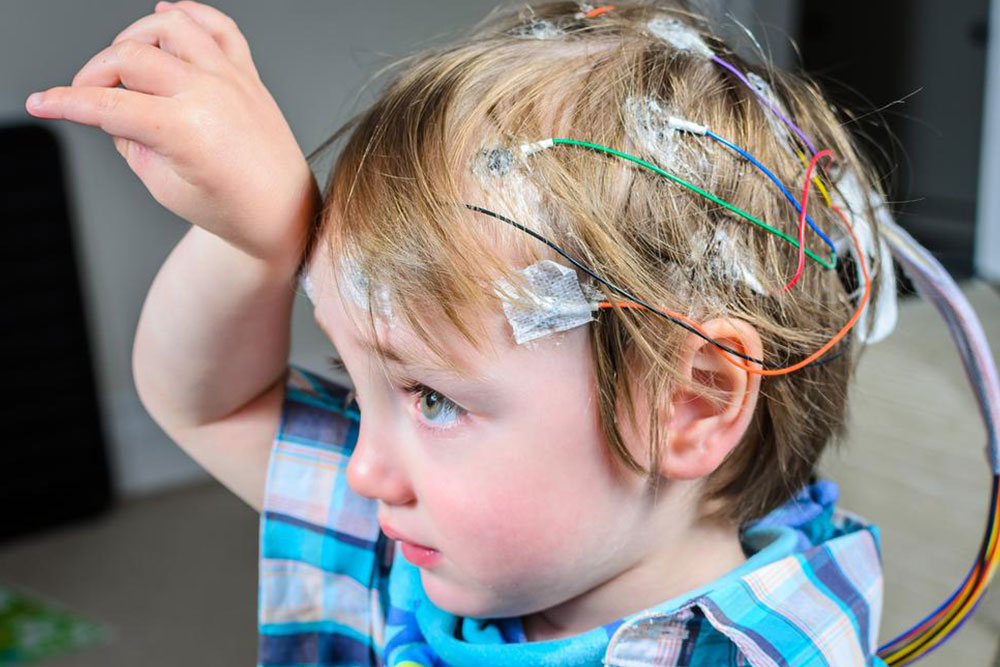A Comprehensive Guide to Complex Partial Seizures: Causes, Diagnosis, and Treatment Strategies
This comprehensive guide explores complex partial seizures, detailing their causes, symptoms, diagnosis, and modern treatment options. Early recognition and effective management are crucial for improving quality of life, with therapies ranging from medications to surgical interventions. Understanding triggers and ongoing care can significantly reduce seizure episodes and help patients manage their condition better.

Understanding Complex Partial Seizures: Causes, Diagnosis, and Management
Complex partial seizures, also known as focal impaired awareness seizures, are a neurological condition characterized by episodes that originate predominantly in the temporal lobes of the brain. These seizures are among the most common types experienced by individuals with epilepsy, neurological disorders, or brain injuries. Understanding the intricacies of complex partial seizures—including their causes, how they are diagnosed, and the available treatments—is essential for patients, caregivers, and healthcare professionals aiming to manage and mitigate their impact effectively.
Typically lasting from a few seconds to a couple of minutes, complex partial seizures can cause temporary alterations in consciousness, perception, and behavior. The symptoms can vary greatly from person to person, often making diagnosis a complex process that requires a combination of medical history analysis and advanced diagnostic tests. Recognizing the key signs and understanding the triggers that can provoke these seizures are crucial in managing this condition effectively.
In this comprehensive guide, we will explore in depth the causes behind complex partial seizures, how they are diagnosed through modern medical techniques, and the range of management and treatment options available today. Our goal is to provide you with valuable information that can help improve quality of life for those affected by this condition.
What Are Complex Partial Seizures?
Complex partial seizures are a specific type of focal seizure, originating within a localized area of the brain but with effects that can influence consciousness and awareness. Unlike simple partial seizures, which involve localized symptoms without loss of consciousness, complex partial seizures impair awareness, leading to behaviors that can seem involuntary or automatic.
These seizures generally begin in the temporal lobe, an area of the brain responsible for processing emotions, memory, and language. The onset can sometimes involve sensory phenomena such as unusual smells or tastes, visual disturbances, or emotional changes. Because of their complexity, these seizures can sometimes be mistaken for psychiatric conditions or other neurological issues, emphasizing the importance of thorough evaluation.
Key Symptoms and Signs of Complex Partial Seizures
Understanding the symptoms can help with early recognition and diagnosis. Signs often include:
Automatic behaviors like lip-smacking, chewing, or hand movements
Repetitive actions such as walking in circles or cycling movements
Altered awareness, confusion, or inability to respond
Unusual vocalizations, shouting, or laughing without apparent reason
Memory gaps of the event
Hallucinations, often visual or emotional in nature
It is common for individuals to experience post-seizure confusion, fatigue, or disorientation, which can last for several minutes or longer. Recognizing these signs is vital for timely medical intervention and management.
What Triggers Complex Partial Seizures?
Several factors can provoke complex partial seizures, including:
Reactions to medications or substance withdrawal
Low blood sugar levels (hypoglycemia)
Exposure to flashing lights or certain visual patterns
High fever, especially in children
Sleep deprivation or stress
Hormonal changes
Some individuals may notice aura-like sensations—warning signs—such as specific smells, visual disturbances, or emotional sensations that precede a seizure, providing an opportunity to take precautionary measures.
Diagnosing Complex Partial Seizures
Accurate diagnosis is essential for effective treatment. It involves a comprehensive approach, including detailed medical and seizure history gatherings from the affected individual and witnesses. Medical professionals often utilize a combination of diagnostic tools to confirm the type and origin of seizures:
Electroencephalogram (EEG): This test records electrical activity in the brain, capturing abnormal patterns associated with seizure activity. Interictal EEGs, conducted between seizures, can sometimes detect epileptiform discharges, aiding diagnosis.
Magnetic Resonance Imaging (MRI): High-resolution MRI scans help identify structural brain abnormalities such as lesions, tumors, or areas of sclerosis that may cause seizures.
Computed Tomography (CT) Scans: Useful in emergency settings to rule out acute brain injuries, bleeding, or other lesions.
Blood Tests: Blood analyses help identify metabolic or infectious causes, or screen for underlying health conditions.
Neurological Examination: A thorough physical and neurological assessment can help determine overall brain function and rule out other neurological disorders.
Collectively, these tools allow healthcare professionals to pinpoint seizure focus, differentiate between seizure types, and formulate appropriate treatment plans.
Management and Treatment Options for Complex Partial Seizures
Once diagnosed, managing complex partial seizures involves a combination of medication, lifestyle adjustments, and, in some cases, surgical interventions. The primary goal is to reduce the frequency and severity of seizures, improve quality of life, and minimize risks associated with seizure episodes.
Fortunately, advances in neuroscience and modern medicine have expanded the options available for treatment, allowing individualized care plans to be devised for each patient.
Medication-Based Treatments
Anti-epileptic drugs (AEDs) are the cornerstone of seizure management. Depending on the patient's specific condition, neurologists may prescribe medications such as phenytoin, carbamazepine, lamotrigine, levetiracetam, or valproate. These drugs work by stabilizing nerve activity in the brain, preventing abnormal electrical discharges.
Adherence to prescribed medication schedules is crucial for effectiveness. Regular follow-up appointments ensure proper dosing adjustments and monitor for side effects.
Advanced Surgical and Device-Based Therapies
In cases where medications do not adequately control seizures, surgical options may be considered. These include:
Resective Surgery: Removing the seizure focus area in the brain if it is localized and accessible.
Responsive Neurostimulation (RNS): A device implanted in the brain that detects abnormal electrical activity and delivers targeted stimulation to prevent seizures.
Vagus Nerve Stimulation (VNS): An implanted device that stimulates the vagus nerve to help regulate seizure activity.
Dietary Modifications: The ketogenic diet, rich in fats and low in carbohydrates, has shown effectiveness in some cases, especially in children with refractory epilepsy.
Managing Triggers and lifestyle modifications
Patients are advised to identify and avoid known seizure triggers, maintain a regular sleep schedule, manage stress levels, and avoid alcohol or recreational drugs. Adopting a healthy lifestyle can significantly reduce seizure frequency and improve overall health.
Prognosis and Outlook
Many individuals with complex partial seizures respond well to treatment, especially with early diagnosis and adherence to therapy. Children diagnosed early often experience remission or outgrow the condition with proper management. However, some cases may require lifelong management, emphasizing the importance of ongoing medical support and lifestyle adjustments.
In summary, understanding complex partial seizures involves recognizing their symptoms, triggers, and the importance of accurate diagnosis. With current medical advances, most patients can achieve good seizure control and lead active, fulfilling lives.





